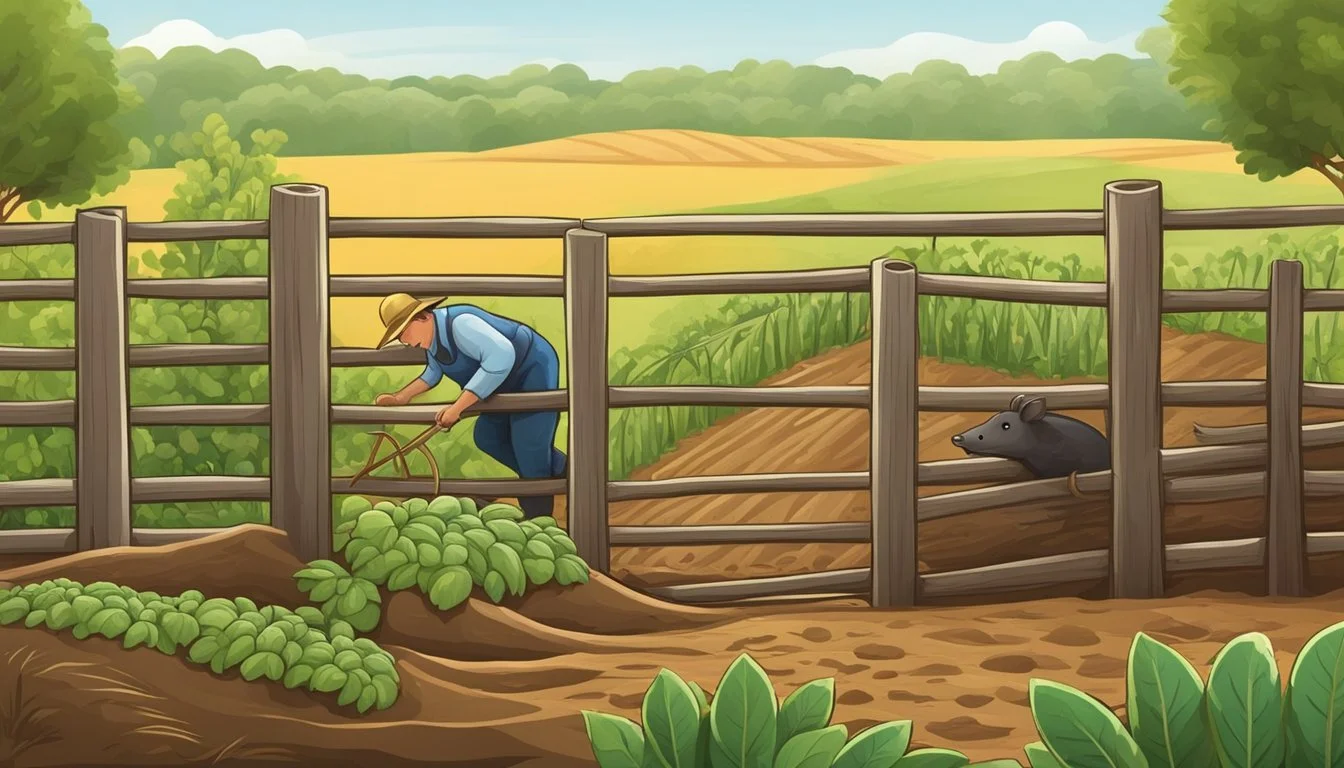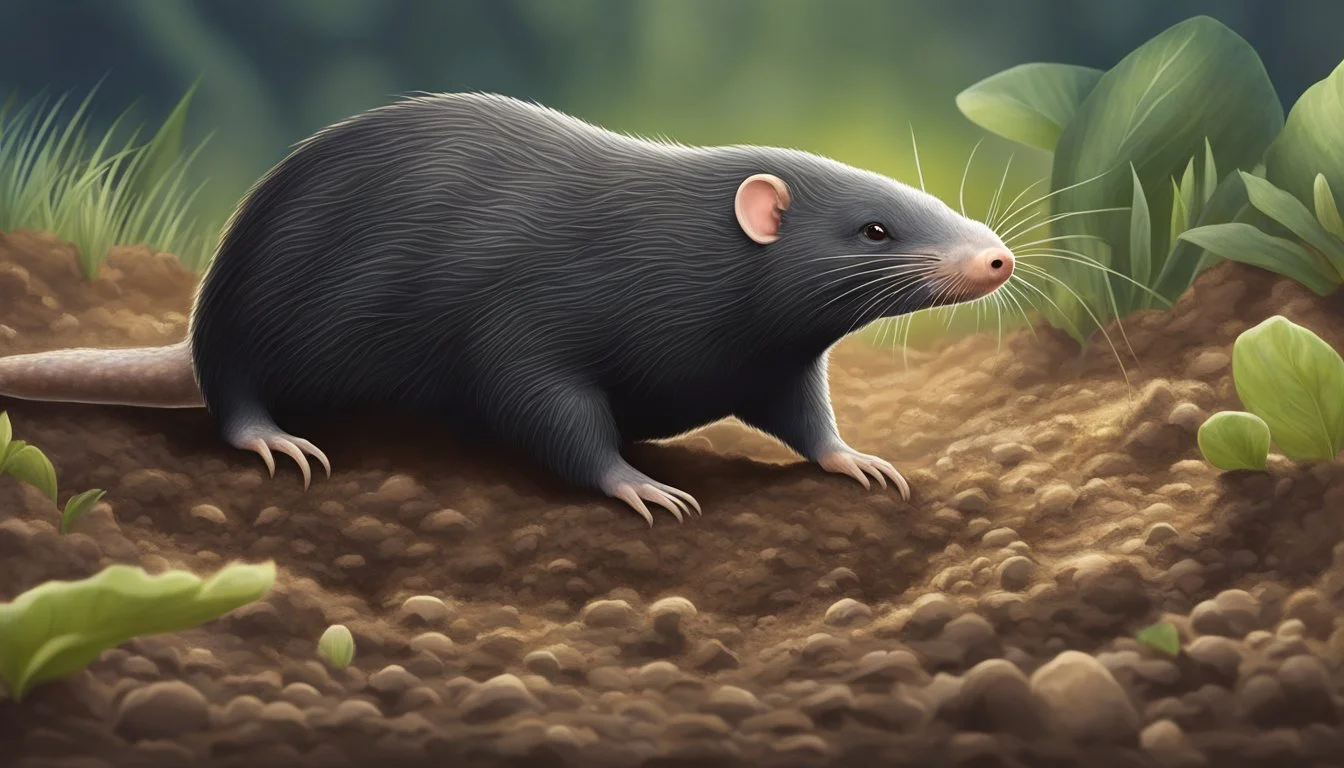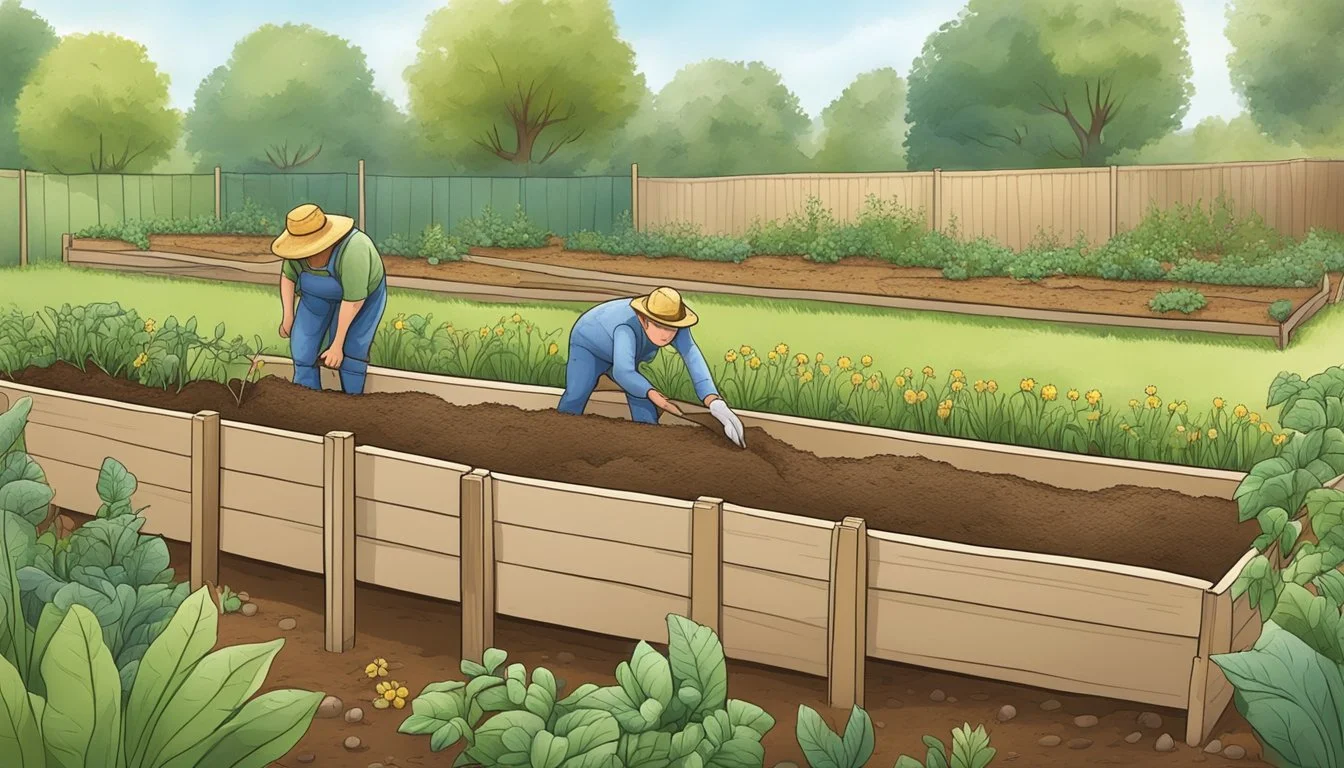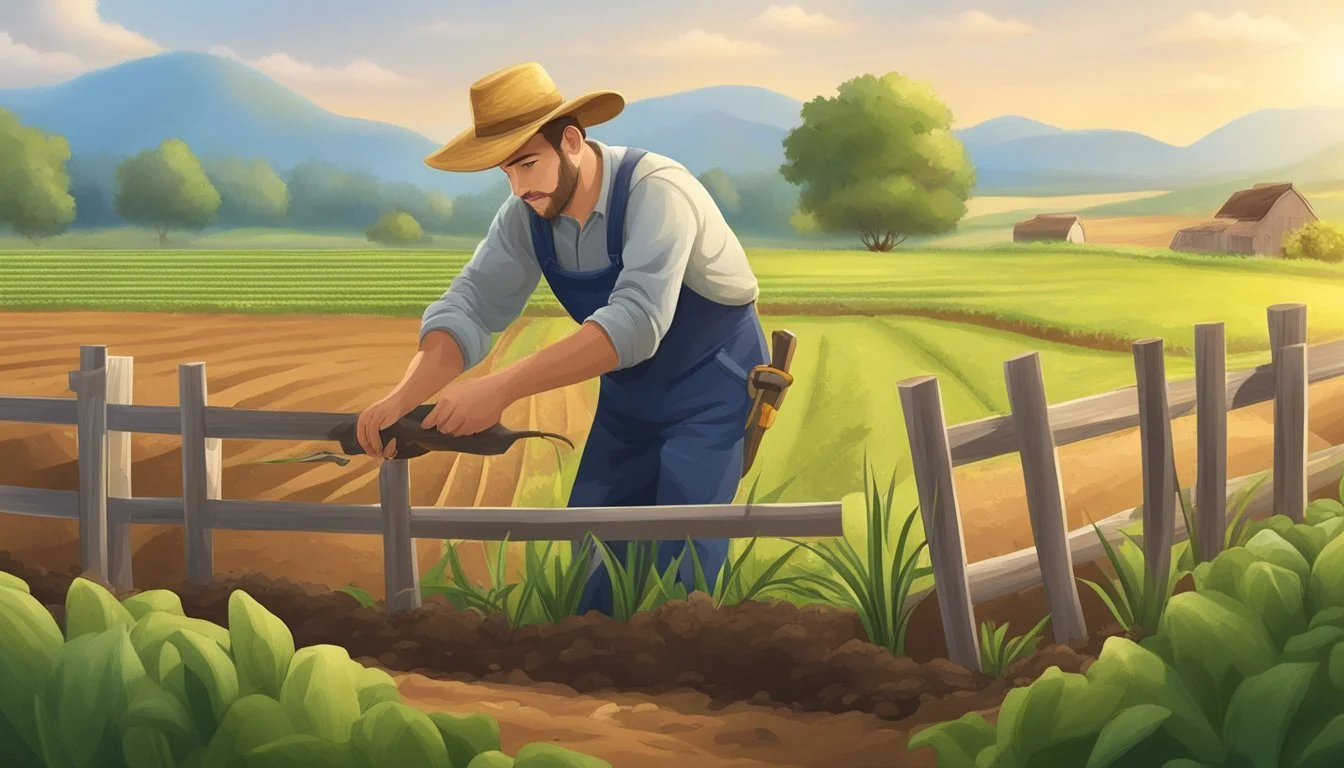Protecting Crops from Star-nosed Mole
Effective Strategies for Farmers
Mole activity, particularly from the intriguing star-nosed mole, presents itself as a complex challenge for farmers and gardeners aiming to protect their crops. Known for their distinctive star-shaped snouts and extraordinary digging skills, star-nosed moles are small mammals that can significantly impact agricultural land. While primarily carnivorous, feeding mainly on invertebrates, their tunneling behavior can disrupt root systems and soil structure, leading to indirect damage to crops. Understanding these creatures' behavior is the first step in developing effective strategies to prevent farm damage.
Developing a management plan involves a multifaceted approach that encompasses habitat modification, physical barriers, and possibly trapping. Techniques such as soil drainage improvements and the employment of natural mole deterrents help create an environment less attractive to moles. Companion planting can also contribute to mole management by integrating plants that either discourage mole activity or attract their natural predators. With the goal of crop protection, it is essential for farmers to identify the signs of mole damage accurately and understand the biology and habits of star-nosed moles to implement the most effective control measures.
Understanding the Star-Nosed Mole
Before delving into specific strategies for protecting crops from the star-nosed mole, it is crucial to understand the unique aspects of this mammal. Known scientifically as Condylura cristata, the star-nosed mole possesses distinct traits and behaviors vital for its survival in its habitat.
Physical Characteristics
The star-nosed mole is easily recognized by its most distinctive feature: a star-shaped structure at the tip of its snout composed of twenty-two pink, fleshy tentacles. These appendages house an extremely sensitive sense of touch, with more than 100,000 neurons packed into an area roughly one centimeter wide. This adaptation allows the mole to effectively navigate and forage within its environment. Adult star-nosed moles typically weigh between 30-50 grams and exhibit large clawed forelimbs that are well-suited for burrowing.
Habitat and Distribution
This species is predominantly found in moist, lowland areas throughout parts of North America, ranging from the northeastern United States to Canada. They favor wetland environments and are also known to inhabit forested areas where the soil is conducive to their burrowing lifestyle. The range and choice of habitat reflect the mole's need for specific soil types that facilitate the construction of their extensive tunnel systems.
Dietary Habits
As insectivores, star-nosed moles have a diet consisting primarily of invertebrates. They are known for their incredibly quick foraging behavior, sometimes capturing and eating prey in a fraction of a second. The proficiency of their hunting is in part due to the tactile acuity of their star-shaped nose, which detects prey as the mole swiftly moves through its burrows and across the forest floor.
Behavioral Traits
The behavioral traits of the star-nosed mole include solitary living, with the exception of the breeding season, and strong territoriality. These mammals spend most of their lives underground and are highly proficient burrowers. The star-nosed mole's incredible burrowing abilities are not just utilized for finding food; they also create extensive systems of tunnels for shelter and protection, playing a critical role in their survival and impact on the environment.
Seasonal Activity and Reproduction
Understanding the seasonal activity and reproductive habits of the star-nosed mole is essential for effectively managing their impact on crops. This section will address the species' life cycle, including its breeding times and patterns of behavior throughout the seasons.
Life Cycle and Reproduction
The star-nosed mole is a fairly reclusive mammal that follows a distinctive reproductive cycle. Breeding season for these moles begins in late winter to early spring. The gestation period for a star-nosed mole lasts approximately 45 days, with offspring typically born between May and early July. These mammals reach sexual maturity at about 10 months and will be ready to breed in the following season.
Seasonal Behavior
During winter, the star-nosed mole continues to be active beneath the snow cover, tunneling through the soil in search of food. As spring arrives, their activity increases, coinciding with the need for more food to rear their young. In fall, they prepare for the colder months, but unlike some mammals, they do not hibernate. They can be considered a year-round threat to crops due to their constant need to forage for food and create extensive tunnel networks. Understanding their behavior throughout the year is crucial in taking preventive measures to protect crops from their burrowing.
The Impact of Star-Nosed Moles on Crops
Star-nosed moles can have a significant impact on crops due to their burrowing activity, affecting both the quality and the appearance of the garden space.
Characteristics of Mole Damage
Mole damage to gardens is usually identified by the presence of mole hills and raised ridges resulting from their tunneling activities. These creatures primarily feed on invertebrates, but their extensive underground networks can disturb plant roots, which may lead to plant stress or even death. Crops can suffer indirectly as a result of these disrupted root systems, where the plants become more susceptible to disease, have diminished capacity to absorb water and nutrients, and are less anchored, which can increase the chance of being uprooted.
Visible Signs:
Raised ridges in soil
Volcano-shaped mounds of dirt (mole hills)
Identifying Mole Presence in Gardens
To ascertain if star-nosed moles are the culprits behind garden damage, one should look for visible tunnels near the surface and the characteristic mole hills. These hills are often the entry and exit points for the moles' subsurface corridors. Additionally, gardeners can check for soft spots in the soil where the structure may have been weakened by the moles' underground activity. A closer inspection of these areas may reveal disrupted or severed plant roots which can underscore the problematic presence of these pests.
Indications of Mole Activity:
Soft patches in the garden
Disconnected or damaged plant roots
Unexpected plant wilt or collapse
Preventive Measures
Effective preventive measures against the star-nosed mole involve strategic cultivation practices and soil management. These tactics are aimed at maintaining soil health while deterring mole activity within gardens and agricultural landscapes.
Cultivation Practices
Implementing specific cultivation practices can aid in mole control. For instance, promoting healthy plant growth creates a less attractive environment for moles seeking out insects and grubs in weak vegetation. Crop rotation and interspersing repellant plants like marigolds can discourage moles from infiltrating the area. Additionally, the cultivation of crops with strong odors, such as mint and rosemary, may naturally repel moles.
Soil Management
Maintaining proper soil health is a dual-purpose strategy that supports plant health and acts as a natural deterrent for star-nosed moles. Soil that is compacted or poorly drained invites moles that desire easy tunneling and access to soil invertebrates. Enhancing soil drainage and aeration can make the environment less appealing to moles. Regular aeration helps disrupt the tunnels and soil structure moles rely on. Monitoring soil health and implementing improvements can ultimately contribute to prevention of mole damage.
Direct Control Strategies
To protect crops from the star-nosed mole, a pest known for its extensive tunneling, there are specific direct control methods that can be employed. These techniques help to prevent and mitigate the damage caused by this particular pest.
Physical Barriers and Repellents
Placing physical barriers like underground fencing offers a reliable deterrent to moles. By installing a barrier that extends several feet below the surface, farmers can prevent moles from gaining access to planting areas. Heavy-duty wire mesh is recommended for its durability and effectiveness.
Another method involves using repellents to discourage moles from entering an area. Commercially available mole repellents usually contain castor oil, which is disliked by moles. Applying these repellents around the perimeter of a crop can help to keep moles at bay, although regular reapplication may be required to maintain efficacy.
Trapping and Baits
Trapping is a hands-on pest control measure that can yield immediate results if executed correctly. It is vital to identify active mole tunnels before setting traps such as scissor-jaw or choker-loop traps, which are often recommended by pest control specialists. Proper placement and setting are paramount for these devices to be effective.
When it comes to baits, they should mimic the mole's natural diet, such as earthworms or grubs. Baiting strategies may require persistence and continuous monitoring to ensure success. Products must be handled according to the manufacturer's instructions, and it may be beneficial to seek advice from a mole control expert to maximize the chances of eradication.
These approaches offer a direct way to manage problems caused by the star-nosed mole. While each has its benefits and limitations, a combination of strategies often yields the best protection for crops.
Legal and Environmental Considerations
When protecting crops from the star-nosed mole, it's imperative to navigate the web of legal regulations and to be aware of the potential environmental impacts. Ensuring compliance and conserving the ecosystem should be at the forefront of any control strategy.
Regulations on Mole Control
Legal considerations primarily revolve around the adherence to state and federal wildlife laws. In many regions, moles, including the star-nosed mole, may be protected or their control regulated. For instance, some states require permits for trapping or deterring wildlife, including moles. It is essential for farmers and land managers to consult with local wildlife agencies or extensions, such as the Virginia Department of Wildlife Resources, to ensure that their mole control methods comply with all relevant legislation.
Environmental Impact of Mole Control
The environmental impact of controlling star-nosed moles should not be underestimated. Moles play a role in aerating the soil and controlling insect populations. Extreme measures against moles can disrupt these natural processes. Chemical repellents and traps, if not used correctly, can also pose risks to other non-target animals and the broader ecosystem. Strategies should, therefore, strike a balance, like those suggested by Penn State Extension, focusing on harm reduction not just to the moles but to the entire habitat in which they live. Maintaining this delicate balance is a cornerstone of sustainable agriculture and environmental stewardship.
Frequently Asked Questions
This section covers common inquiries about protecting crops from the star-nosed mole, incorporating methods from prevention to humane control.
How do you protect crops from moles?
Farmers safeguard crops from moles by employing a combination of exclusion techniques and habitat modification. These can include installing barriers around the crop area and maintaining a clean, debris-free field to discourage mole activity.
What are the natural predators of the star-nosed mole?
The natural predators of the star-nosed mole include snakes, owls, and various mammals. The presence of these predators in the ecosystem can naturally help to limit the mole population.
How do farmers stop moles from destroying their fields?
Farmers can stop moles from destroying fields by utilizing trapping methods, applying soil treatments that repel moles, and by encouraging the presence of natural predators. Preventative measures are critical for long-term control.
How can moles be deterred without causing harm to plants?
Moles can be deterred without damage to plants through the use of natural repellents, such as castor oil-based products, or by introducing vibratory devices that create an unappealing environment for moles without affecting plant health.
What humane methods are available for mole pest control in agriculture?
Humane methods for controlling moles in agriculture include live trapping and relocation, as well as creating an environment that is less attractive to moles by removing their food sources and disturbing the soil periodically.
What practices are effective in preventing mole damage in farm soil?
Effective practices for preventing mole damage in farm soil involve regular monitoring of the land, implementing strategic irrigation practices that deter mole digging, and employing exclusion techniques, such as buried fences or underground barriers.








